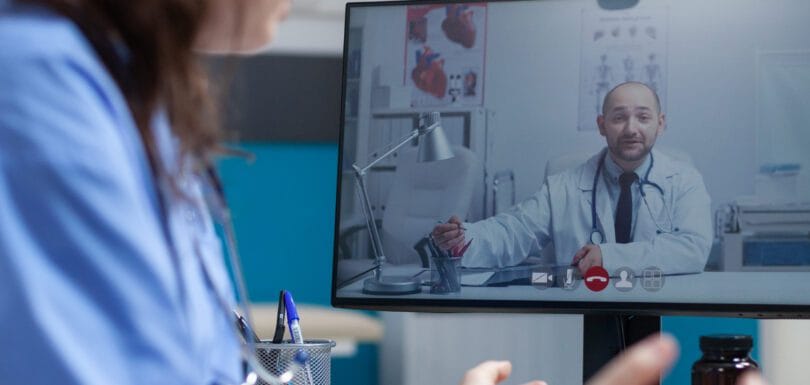The Ultimate Guide to Hiring a HIPAA-Compliant Virtual Assistant
The Ultimate Guide to Hiring a HIPAA-Compliant Virtual Assistant Finding the right HIPAA-Compliant Virtual Assistant can feel overwhelming, especially when patient privacy and sensitive medical information are at stake. As more healthcare practices go remote, hiring a HIPAA-Compliant Virtual Assistant such as a Virtual EMR/EHR Specialist, Virtual Medical Billing Expert, or Virtual Front Desk Expert has become essential for safeguarding patient data while staying productive. In this guide, you’ll discover exactly how to choose, train, and benefit from these specialized assistants so your practice stays compliant, efficient, and patient-focused. Why a HIPAA-Compliant Virtual Assistant Matters Protecting patient data isn’t optional it’s the law. When you hire a HIPAA-Compliant Virtual Assistant, you ensure that your virtual support whether it’s a Virtual EMR/EHR Specialist securely managing medical records, a Virtual Medical Billing Expert handling sensitive billing information, or a Virtual Front Desk Expert managing patient calls — follows strict privacy standards. Many clinics that once relied on in-house staff now use virtual solutions to handle tasks without risking data breaches. Furthermore, outsourcing administrative tasks can reduce burnout among your on-site team. However, if your virtual assistant isn’t properly trained in HIPAA compliance for virtual assistants, your practice could face hefty fines and lose patient trust. That’s exactly why getting it right from day one is critical. Key Benefits of a HIPAA-Compliant Virtual Assistant There’s more to a HIPAA-Compliant Virtual Assistant than just handling calls. Here are some benefits you shouldn’t overlook: Patient Data Security: With the right training, your virtual assistant will follow strict protocols for storing, accessing, and sharing data. Cost Savings: You can hire a Virtual Medical Assistant for a fraction of what it costs to hire another in-office team member. Better Work-Life Balance: As a result, delegating routine tasks lets your staff focus on patient care. Scalability: Using healthcare virtual assistant services, you can scale support up or down as needed. So, whether you want to outsource administrative tasks HIPAA safely or reduce stress on your team, a compliant VA makes all the difference. Tasks Your HIPAA-Compliant Virtual Assistant Can Handle A well-trained HIPAA-Compliant Virtual Assistant can manage a surprising range of tasks. For example, they can: Schedule appointments and send reminders. Handle insurance verification. Manage secure data entry and record-keeping. Conduct patient follow-ups and satisfaction surveys. Coordinate referrals. Address non-clinical patient questions. In addition, when you use trusted healthcare virtual assistant services, you can confidently assign these duties while protecting patient data. What Makes a Virtual Assistant HIPAA-Compliant? Not all virtual assistants understand healthcare privacy laws. To qualify as a HIPAA-Compliant Virtual Assistant, they must: Complete HIPAA training for virtual staff. Sign a Business Associate Agreement (BAA) with your practice. Follow encryption and secure communication standards. Use verified tools for file storage and messaging. Limit access to only necessary patient data. However, many practices fail to check these boxes when they hire a remote medical assistant, which can lead to unintentional violations. How to Hire a HIPAA-Compliant Virtual Assistant Knowing how to hire a virtual assistant for healthcare is half the battle. To make this process easier, use these practical steps: Identify Your Needs: Which tasks do you want to delegate? Choose Reputable Providers: Always work with trusted companies like Remote Medical Assistant that specialize in healthcare. Verify Compliance: Moreover, check that they offer HIPPA-compliance for virtual assistants, including a BAA. Ask for References: Reliable assistants will have positive testimonials. Conduct Training: Even experienced VAs need training on your specific workflow and privacy protocols. By following these steps, you’ll find the right fit for your practice. Questions to Ask Before You Hire To make sure your HIPAA-Compliant Virtual Assistant is truly ready, ask questions upfront. For example: What HIPAA training for virtual staff do they complete? Do they have experience as a medical practice virtual assistant? How do they handle patient data security? What software do they use to stay compliant? How do they manage backups and data breaches? These questions will help you pick the best match and avoid surprises later. How Remote Medical Assistant Keeps Your Practice Safe At Remote Medical Assistant, we know that privacy is your top priority. That’s why we offer fully vetted HIPAA-Compliant Virtual Assistants who complete regular privacy training. In addition, we sign a clear BAA and use secure tools for every interaction. Whether you want to hire a Virtual medical assistant for scheduling, billing, or data entry, our team protects your patients’ information every step of the way. In fact, many of our clients say that working with a Virtual Assistant has helped them reduce stress, save money, and grow their practice with confidence. Best Practices to Train Your Virtual Assistant Even the best HIPAA-Compliant Virtual Assistant needs clear guidelines. Here’s how to keep them aligned with your practice: Use written SOPs for routine tasks. Review privacy rules regularly. Limit access to only the files they need. Have an emergency plan for data breaches. Furthermore, schedule regular check-ins. By following these steps, you’ll protect patient data while empowering your VA to succeed. Future of Virtual Medical Assistants Healthcare is becoming more digital every day. As a result, more practices now prefer to outsource administrative tasks HIPAA to stay flexible and efficient. A qualified Virtual Medical Assistant keeps your front desk running smoothly while your team focuses on patient care. If you choose wisely, your assistant won’t just protect data they’ll help your practice thrive. Common Mistakes to Avoid Some practices make costly mistakes when hiring virtual help. Here’s what to watch for: Failing to sign a BAA. Assuming all Virtual Assistants know about HIPAA compliance. Using unsecured communication tools. Not training the assistant on updates. Ignoring local privacy laws that may apply. Therefore, avoiding these pitfalls will ensure your HIPAA-Compliant Virtual Assistant is a true asset. FAQs 1.What does HIPAA compliance mean for virtual assistants? HIPAA compliance means your virtual assistant understands and follows the strict rules for handling patient health information. They must protect data privacy, sign a Business Associate Agreement (BAA), and use secure systems 2.Can I











